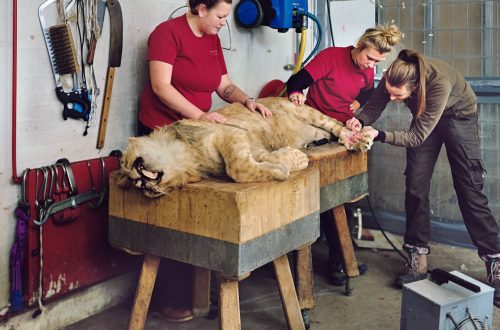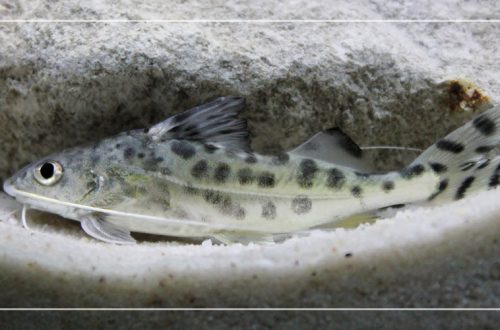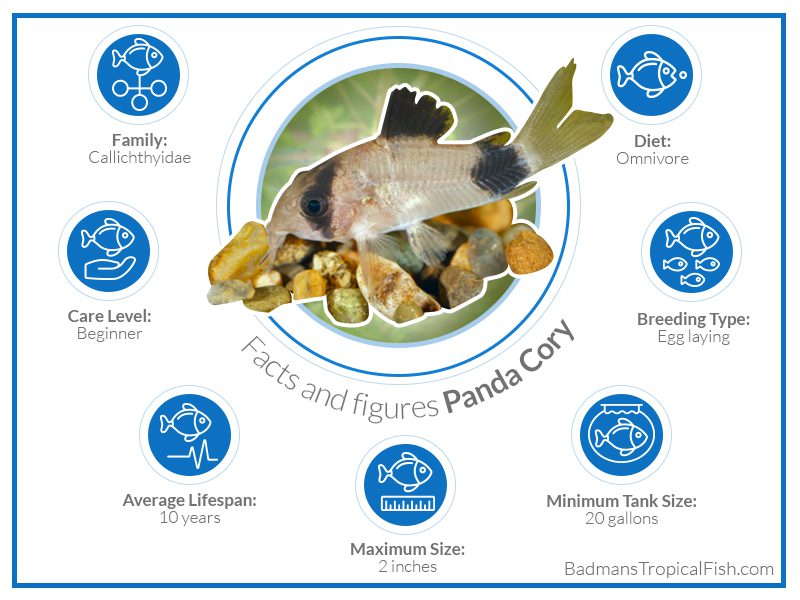
Corydoras panda: maintenance and care, breeding features, size and description
These fish were first discovered in 1968 on one of the tributaries of the Amazon in Peru. This species was discovered by the researcher G. R. Richardson, who for some reason did not immediately bother to give it a name, and for 3 whole years these catfish were nameless. Later, this misunderstanding was settled, and the individuals received a very interesting name – the panda corridor. Everything is clear with the word corridors, it means armored catfish (kori in Greek is a shell or helmet, doras is skin), but why is a panda? It is enough to see this catfish and everything will immediately become clear. A black transverse stripe passes through its eyes, which gives this fish a certain resemblance to a Chinese bear.
Contents
Features of behavior
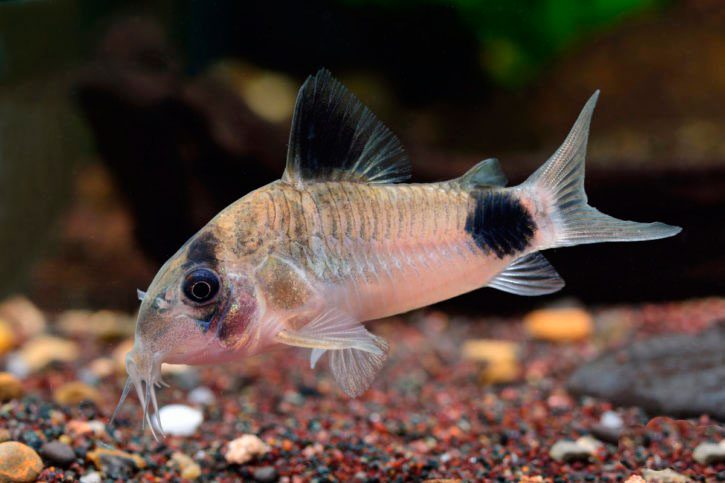
For panda corridors, it is necessary to plant plants with a strong root system, otherwise they can dig them up when they dig up the soil
Aquarium catfish are rarely aggressive, and this species is one of the most peaceful. They even get along with small freshwater shrimp.
These catfish are very calm, they prefer a nocturnal lifestyle, so they rarely get into the eyes of other inhabitants of the aquarium. They spend most of their time digging through the soil in search of food without damaging the roots of most plants.
During the day, aquarium pandas prefer to hide somewhere under snags, in grottoes or in the thick of plants, because they do not really like bright light.
These fish cannot live alone; there should be at least 3-4 of them in the aquarium.
Corridors can breathe air, so they sometimes rise to the surface. If this happens frequently, it may be that there is not enough oxygen in the water. In this case, it is necessary to carry out additional aeration or change part of the water.
Description
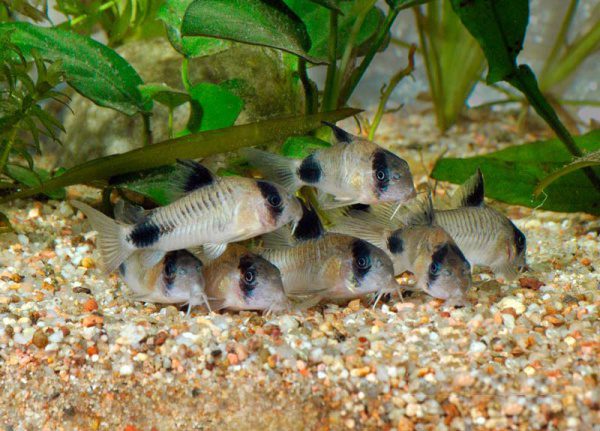
This type of panda corridor differs from the usual one only in the length of the fins and tail.
The corridors look very attractive. These are pale pink fish with three black rings on the body: in the eye area, on the dorsal fin and around the tail. Yellowish-white fins and three pairs of antennae around the mouth complete the image of a catfish that reaches a size of 5,5 cm.
Recently, breeders from Germany have developed a veiled species that has beautiful long fins and a tail.
Pros and cons of a panda corridor as a pet
There are no longer wild fish for sale, there are specially bred individuals in stores. Accordingly, they have already adapted to the aquarium conditions.
Many people think that keeping these fish does not require much trouble. Catfish are friendly, do not need special food and water temperature.
However, there are also some minor downsides. Corridors often injure antennae on hard ground, so its choice must be approached responsibly. Moreover, the bottom needs frequent cleaning, because the fish spend most of their lives there.
Another drawback is that during the day they are in hiding, so it is not always possible to enjoy watching the fish.
Care and maintenance
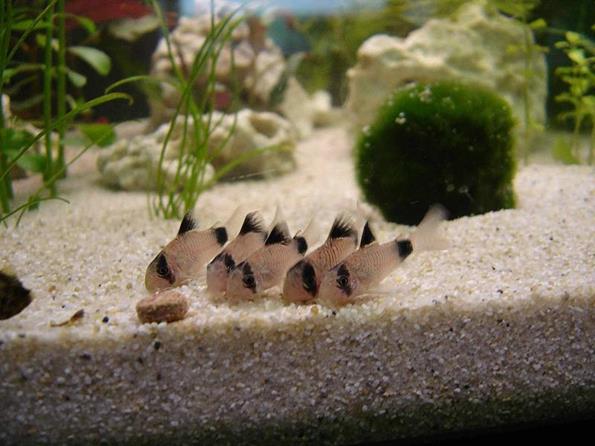
You can buy catfish snags at the pet store or make your own.
Feeding
Aquarium pandas are unpretentious in food. It is important to consider that it is more convenient for them to take food from the bottom, so it is better to purchase special sinking tablets and granules.
Catfish equally actively consume dry food, which can be purchased at a pet store, frozen or live food (tubifex and other worms).
Given the nocturnal image of the fish, it is better to feed them once a day in the evenings, this regimen fully meets the natural needs of these individuals.
Diseases
Corydoras suffer from a number of diseases. Freshly bought fish can be infected, therefore, before planting it in an aquarium, you must first place the individual in quarantine – a separate container. Add a few drops of a special disinfectant solution, such as Antipar, to the water and leave for 1-2 days.
The main groups of diseases that are dangerous for catfish:
- Bacterial. Diseases of varying severity: mycobacteriosis, for example, cannot be treated, and fin rot is easily stopped with antifungal agents.
- Viral. Lymphocytosis is characterized by pathological formations of lymph nodes, a white coating appears around the eyes, and is successfully treated with special agents that can be purchased at a veterinary pharmacy. Rare iridovirus infection is expressed by darkening of the skin and lethargy, has a high mortality.
- Parasitic. Ichthyophthirius appears as small white spots on the fish, a slight increase in the temperature of the water in the aquarium will help get rid of the parasites.
Most diseases of any fish are caused by improper care and lack of quarantine for new individuals. Although catfish are quite unpretentious, you need to carefully monitor their condition.
Terms
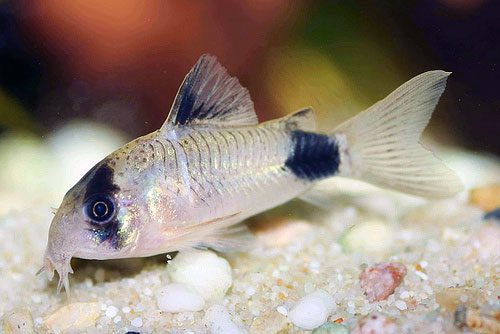
Fine gravel can be used as soil for catfish
Some hobbyists report that they have whole flocks of pandas living in almost a 10-liter aquarium, and this is hardly comfortable for the fish. Most experts believe that 40 liters for 3-5 individuals is more suitable. The ideal dimensions of an aquarium of this size are 100 cm long, 40 cm wide and 35 cm high.
The soil should consist of fine sand or pebbles without sharp edges. Dark sand is better, as light sand prevents the fish from hiding.
The aquarium is best planted with plants – they will serve as a good shelter. It is useful to spread duckweed on the surface of the water so that direct light does not disturb the fish. You can also buy driftwood, grottoes and stones, add oak or beech leaves to the aquarium, which must be changed along with water once a week.
The ideal water acidity for catfish is pH 6,0–7,1, temperature 20–22°C
Who do they hang out with
Catfish get along well with other fish, especially with mollies, small cichlids, zebrafish and rasboras. They have a more complicated relationship with large individuals – goldfish treat them quite aggressively. Pandas are also annoyed by Sumatran barbs, which cut off their fins.
Breeding
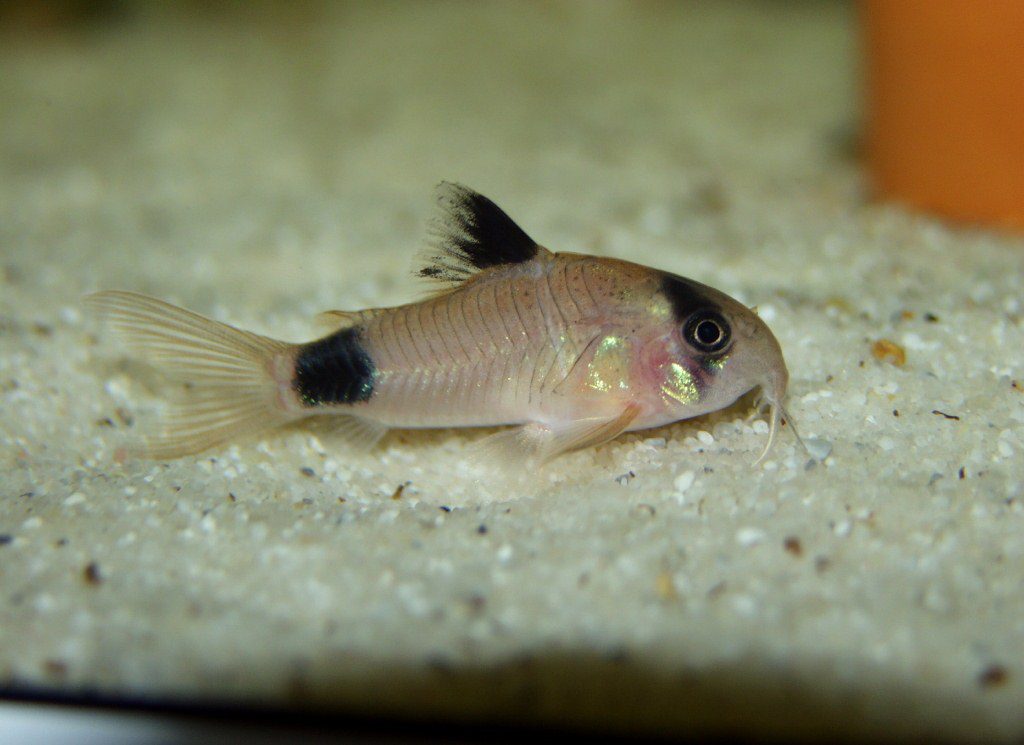
The main gender difference between panda corridors is body size
How to distinguish a female from a male
The female catfish is larger and wider, has a rounded underbelly, while the males are smaller and shorter. They have a more even line of the abdomen, and the dorsal fin has a pointed shape.
Reproduction and spawning
Breeding catfish is not difficult, and even beginners can do it.
To do this, you need to follow a few simple steps:
- Select a separate tank with a filter and a heater, place steam there.
- Raise the water temperature a few degrees to encourage spawning.
- Increase the intensity of feeding, preferentially use live food.
- Cover the bottom of the tank with moss or plants to attach eggs.
- Lower the water temperature when the female’s abdomen swells. This is necessary to stimulate fertilization, since in natural conditions spawning occurs during the rainy season.
The female lays up to 100 eggs, attaching them to the aquarium glass and plants.
Some eggs may become covered with a harmful fungus, which must be destroyed, because they are not viable. To do this, a special type of freshwater shrimp is launched into the tank, which eat them.
How long do aquarium pandas live
With proper care and good conditions, the life of these fish is usually 10 years. However, there are cases when catfish continued to please their owners for 12–13.
Corydoras panda is a calm and unpretentious fish, a suitable option even for a novice aquarist. Due to their beautiful appearance, catfish become a real decoration of the aquarium. No wonder today they are one of the most popular individuals for home keeping.




